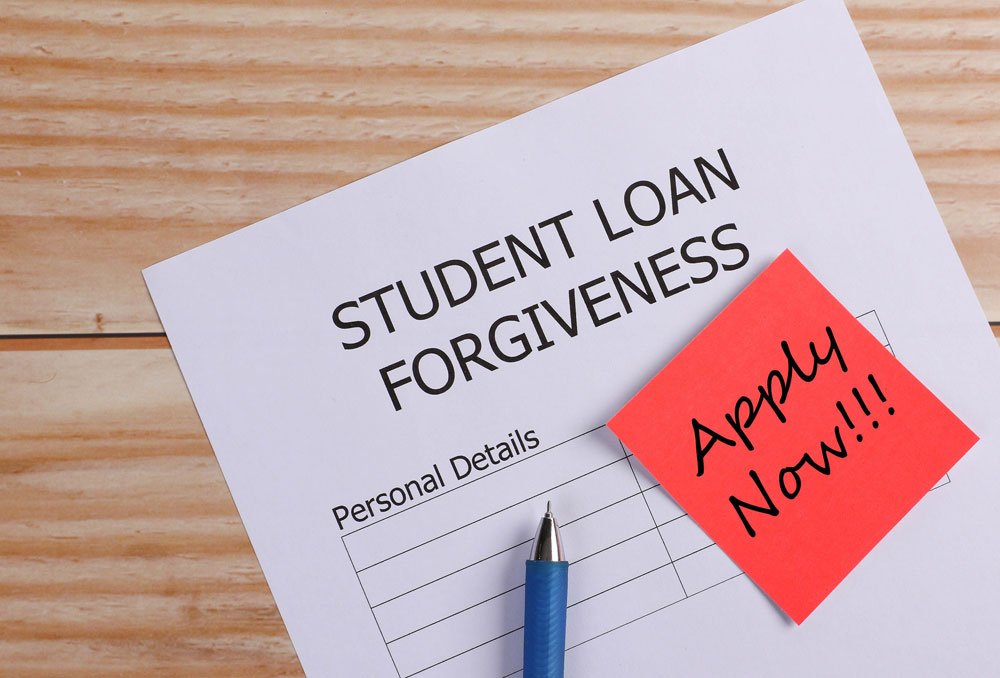Student loan forgiveness programs offer a valuable opportunity for borrowers to reduce or eliminate their federal student loan debt. These programs are designed to provide financial relief to individuals who meet specific criteria, such as working in certain professions, making consistent loan payments, or serving in public service roles. However, navigating the student loan forgiveness landscape can be complex, as each program has its own eligibility requirements and application process. In this article, we will explore the different types of student loan forgiveness programs, the eligibility criteria, and answer frequently asked questions to help you understand how these programs work and whether they are a viable option for you.
What is Student Loan Forgiveness?
Student loan forgiveness is a process that allows borrowers to have a portion or all of their federal student loan debt forgiven after meeting specific conditions. These conditions can include working in a qualifying job or making a set number of on-time payments over a certain period. While federal student loan forgiveness programs are not automatically granted, they offer significant financial relief for borrowers who qualify. In many cases, these programs require ten years of service or more, but the payoff is the cancellation of remaining student loan debt.
Types of Student Loan Forgiveness Programs
There are several types of student loan forgiveness programs, each with its own eligibility requirements. Below are some of the most common and well-known options.
1. Public Service Loan Forgiveness (PSLF)
The Public Service Loan Forgiveness (PSLF) program is one of the most popular and well-known forgiveness programs. It is available to individuals who work in qualifying public service jobs, such as those in government agencies, non-profit organizations, and certain other public institutions.
Eligibility for PSLF:
- You must work full-time for a qualifying public service employer.
- You must make 120 qualifying monthly payments on a Direct Loan under a qualifying repayment plan.
- You must submit the required paperwork through the PSLF application process.
After 120 qualifying payments, any remaining loan balance is forgiven. The program encourages people to pursue public service careers by offering a way to eliminate federal student loan debt.
2. Teacher Loan Forgiveness
Teachers working in low-income schools or in certain high-need subject areas may be eligible for Teacher Loan Forgiveness. This program can forgive up to $17,500 in student loans, depending on the subject area taught.
Eligibility for Teacher Loan Forgiveness:
- Teach for five consecutive years in a low-income school.
- Be a highly qualified teacher, as determined by the state’s certification requirements.
- Have no outstanding federal student loan balance before beginning teaching.
This program is particularly beneficial for educators who are committed to working in underserved communities, offering both financial relief and the satisfaction of helping children in need.
3. Income-Driven Repayment (IDR) Forgiveness
Income-Driven Repayment (IDR) plans are a set of repayment options that adjust monthly payments based on your income and family size. Under certain IDR plans, borrowers may qualify for loan forgiveness after 20 or 25 years of qualifying payments.
Eligibility for IDR Forgiveness:
- You must be enrolled in a qualifying IDR plan, such as Income-Based Repayment (IBR), Pay As You Earn (PAYE), or Revised Pay As You Earn (REPAYE).
- You must make qualifying payments for 20 or 25 years, depending on the plan.
- After the repayment period, any remaining loan balance is forgiven.
Though IDR forgiveness can be a good option for those with low incomes or high student loan balances, borrowers should be aware that the forgiven debt may be subject to taxes, as it is considered taxable income by the IRS.
4. Military Student Loan Forgiveness
Members of the U.S. military may qualify for student loan forgiveness through various programs offered by the Department of Defense (DoD) and the Department of Veterans Affairs (VA). These programs provide loan repayment assistance or forgiveness for military personnel who serve a set number of years.
Eligibility for Military Student Loan Forgiveness:
- Military members must serve in specific branches of the military for a set number of years.
- The Department of Defense offers programs like the Student Loan Repayment Program (SLRP) to repay loans for eligible service members.
Each branch of the military may have different terms for student loan forgiveness, so it’s essential for service members to check with their recruiters or commanding officers for more details.
5. Healthcare and Nursing Loan Forgiveness
Healthcare professionals, including doctors, nurses, and medical practitioners, can access loan forgiveness programs through the National Health Service Corps (NHSC) and the Nurse Corps Loan Repayment Program. These programs provide loan repayment assistance to those who work in underserved areas or at high-need facilities.
Eligibility for Healthcare and Nursing Loan Forgiveness:
- Healthcare professionals must work in qualifying underserved areas or for qualifying healthcare facilities.
- Programs such as the NHSC Loan Repayment Program can offer loan repayment assistance for a set number of years in exchange for service.
These programs are designed to address shortages in healthcare access in rural or low-income communities, offering financial relief for healthcare professionals committed to serving these areas.
6. Employer-Based Loan Forgiveness Programs
Some employers offer student loan repayment assistance as part of their employee benefits. These programs may not necessarily forgive loans, but they can provide direct financial assistance to help employees pay down their loans more quickly.
Eligibility for Employer-Based Forgiveness:
- You must be employed by an organization offering student loan repayment assistance.
- Eligibility and amounts vary based on the employer’s policy.
These programs are becoming more common as companies seek to attract and retain top talent, especially in competitive job markets.
Frequently Asked Questions (FAQs) About Student Loan Forgiveness
1. How do I apply for student loan forgiveness?
To apply for student loan forgiveness, you must complete an application through your loan servicer. Each forgiveness program may require different documentation and forms, so be sure to follow the specific instructions for the program you are applying to. For example, to apply for PSLF, you’ll need to submit the PSLF form to track your qualifying payments.
2. Are all federal loans eligible for forgiveness?
Most federal student loans, such as Direct Loans, qualify for forgiveness under various programs. However, loans like Federal Family Education Loans (FFEL) or Perkins Loans may not be eligible unless they are consolidated into a Direct Loan.
3. How long does it take for my loans to be forgiven?
The time it takes to have your loans forgiven depends on the program. For PSLF, you must make 120 qualifying payments, which typically takes 10 years. For Income-Driven Repayment (IDR) forgiveness, you may need to make payments for 20 or 25 years.
4. Will loan forgiveness be taxed?
In some cases, yes. The IRS may treat the forgiven loan amount as taxable income, depending on the forgiveness program. For example, while PSLF is generally not taxed, forgiveness under IDR plans may be taxed as income. It’s important to consult a tax professional for advice regarding tax implications.
5. Can I apply for multiple forgiveness programs?
Yes, it’s possible to qualify for multiple forgiveness programs if you meet the eligibility criteria for each program. However, you should review each program’s rules to ensure that combining benefits is allowed and that you are on track to meet all the necessary conditions.
6. What happens if I don’t qualify for forgiveness?
If you don’t qualify for forgiveness, you will continue making regular monthly payments on your loan. It’s important to stay in contact with your loan servicer and review all possible repayment options to avoid default.
7. Can I consolidate my loans to qualify for forgiveness?
Consolidating loans can sometimes help you qualify for forgiveness, especially for programs like PSLF. However, consolidating your loans may reset your qualifying payment count, so you should carefully consider whether consolidation is the right choice for you.
8. What if my application for forgiveness is denied?
If your application for forgiveness is denied, you have the right to appeal the decision. The denial could be due to missed payments, incorrect paperwork, or failure to meet program requirements. You may need to provide additional documentation or clarify certain details to move forward with your application.
Conclusion
Student loan forgiveness programs offer valuable opportunities for borrowers to reduce or eliminate their student loan debt. Whether through working in public service, teaching in underserved schools, or pursuing a career in healthcare, these programs provide financial relief for individuals who meet the eligibility criteria. By understanding the various forgiveness options and staying informed about the application process, borrowers can take proactive steps toward securing loan forgiveness and achieving financial freedom. Always ensure you meet the requirements and submit the necessary documentation to increase your chances of qualifying for forgiveness.




